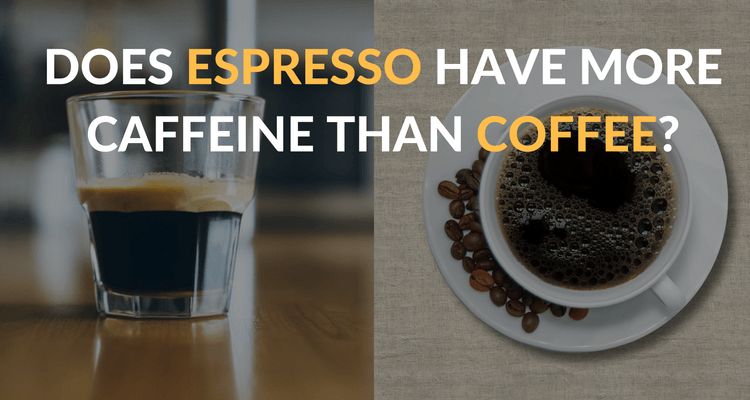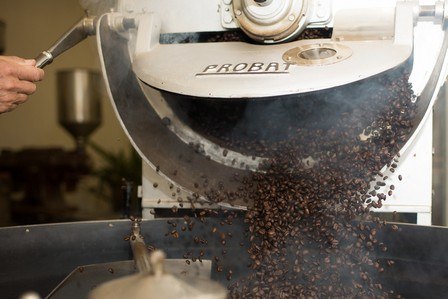Does Espresso Have More Caffeine Than Coffee?

There are so many ways to prepare coffee that it’s hard to keep track of them all, but two of the most popular preparations are definitely drip brew and espresso.
One is a classic that keeps people running in the morning and is a staple in homes and offices around the world, while the other is a fabulously rich delight that’s usually savored without the rushed hustle that drip brew often gets caught up in.
If you’re a coffee lover, you know the differences between regular coffee and espresso don’t just stop with taste or the type of experience people usually have drinking each one.
The caffeine levels in drip coffee and espresso are also different, although few understand why.
The debate over which type of coffee is stronger has been going on for years, with some saying that espresso comes in tiny cups because it’s so potent and full of caffeine.
Others claim that regular drip coffee must contain more caffeine because they feel a stronger buzz after drinking it. The answer to which is more caffeinated comes down to science and several key factors.
Is Espresso Stronger Than Coffee?
Technically, espresso has more concentrated levels of caffeine per ounce, but drip coffee has more caffeine per serving.
However, it’s not accurate to compare caffeine levels per serving because there’s such a huge difference between the size of an espresso shot and a cup of coffee — a cup of drip brew can vary from 8 ounces to over 30 ounces.
There’s approximately 80 mg of caffeine in a serving of espresso and 80 to 120 mg of caffeine in a serving of drip coffee.
The average shot of espresso is two ounces in size and a standard cup of coffee is 12 ounces, which leads to the latter having more caffeine per cup.
Still, it’s easy to see that when compared per ounce instead of per serving, espresso has a significantly higher amount of caffeine in it.
One thing to keep in mind is that with drip coffee, the amount of caffeine can vary significantly depending upon the machine used to make it, the grind size, and a number of other things.
What’s the Difference Between Coffee and Espresso?
One of the reasons that espresso has more caffeine in it is because the grind size used to make it is finer than you’d use for drip brew.
If you used an espresso sized grind in an automatic brewer, you’d likely end up with a bitter cup of coffee because the extraction time used by drip brewers is much longer than with espresso makers.
A shot of espresso is extracted in 20 to 30 seconds, while regular coffee can take several minutes to finish brewing.
The temperature of the water used for extracting each type of brew is another factor in why espresso’s caffeine concentration is higher.
The hotter the water, the more caffeine you’ll be able to extract from coffee grounds.
Some drip brewers don’t get hot enough to even produce a strong cup of coffee, while others reach the optimal temperature for coffee brewing, which is between 95 and 105 degrees Fahrenheit.
Espresso machines use super hot pressurized water and steam to pull a shot, and that hot water is what guarantees maximum flavor and caffeine extraction.
The machine used to make espresso is also why it has so much more crema — which is that delicious foamy mass on the top of espresso shots — than drip brew coffee.
With the burst of hot water comes easier extraction of the coffee’s oils, which leads to a richer flavor, thick crema, and more caffeine per ounce.
Saturation and Roast
There are two more things to consider that have a big impact on how much caffeine a cup of espresso or drip brew coffee will have: saturation and roast.
Lightly roasted coffee beans have more caffeine due to the processes used on them, while darker roasts have less caffeine by the time they’re finished processing.
As for saturation, that deals with the amount of water that comes into contact with coffee grounds during brewing — the greater the level of saturation, the more caffeine that can be extracted in each brew.
Espresso grounds are well saturated by the time a shot is pulled, while the level of saturation that occurs with drip brewers depends upon the model of the machine.
Those with a wide sprayer will soak more of the grounds, while coffeemakers that produce a thin stream of water won’t saturate all of the coffee.
